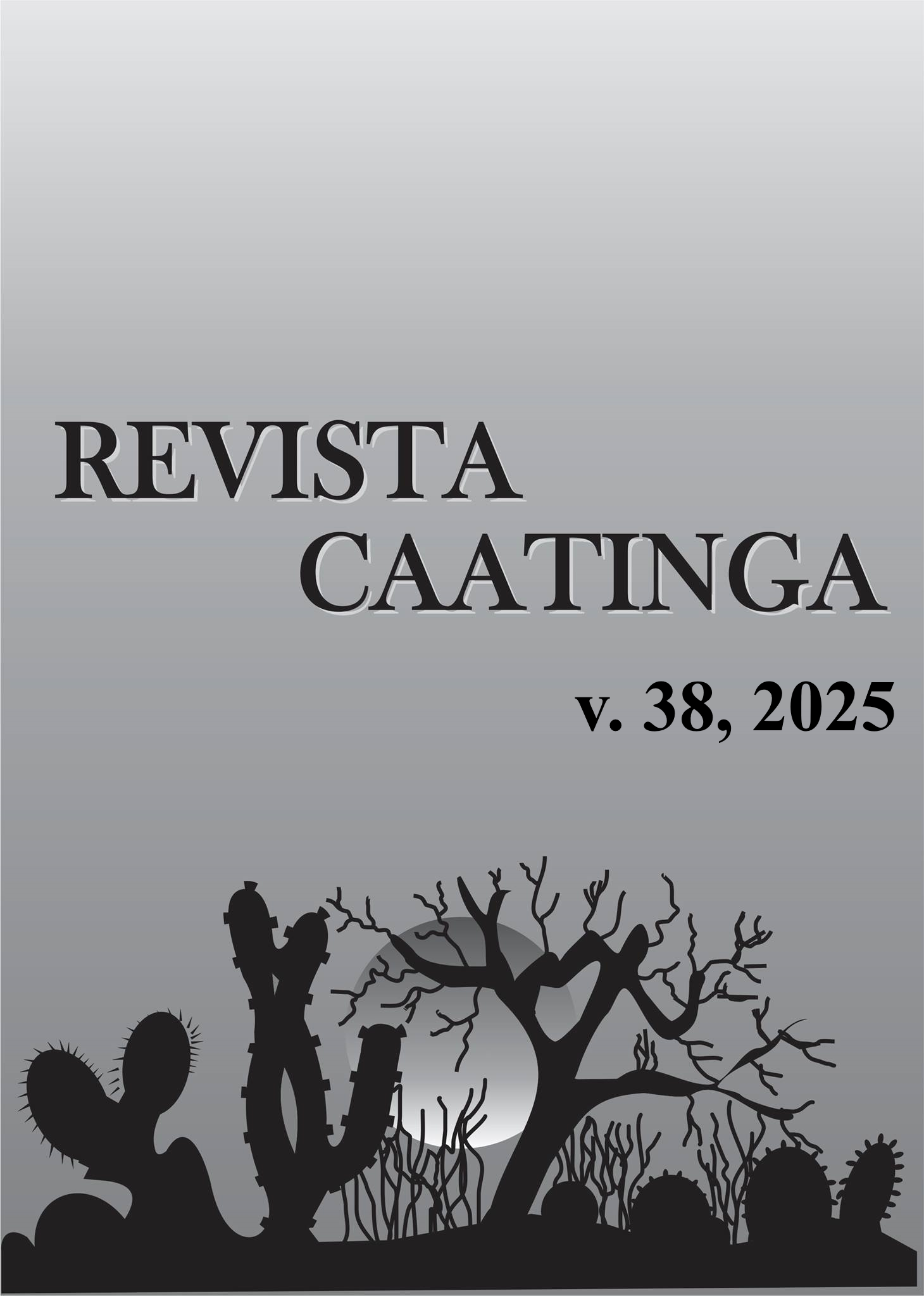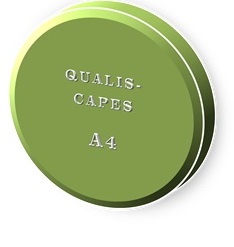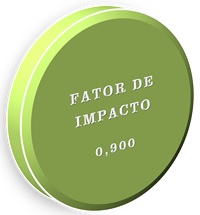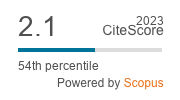Agronomic potential and genetic divergence in the selection of mungbean lines in tropical floodplains
DOI:
https://doi.org/10.1590/1983-21252025v3812539rcKeywords:
Vigna radiata. Breeding programs. Clustering. Dissimilarity.Abstract
Mungbean (Vigna radiata L.) is a Fabaceae species cultivated in several regions in Brazil. In Tocantins state, however, the few cultivars available are not indicated for the region, making it essential to select and subsequently recommend new cultivars. This study aimed to assess the agronomic potential and genetic divergence of mungbean lines to support the development of cultivars adapted to tropical floodplain conditions in Tocantins. Two trials were conducted in a randomized block design with four replications under tropical floodplain conditions, in the municipalities of Lagoa da Confusão and Formoso do Araguaia, Tocantins, Brazil. A total of 18 mungbean lines and two cultivars were studied. Were evaluated pod weight, pod length, number of grains per pod, 100-grain weight, grain yield, and grain index. Lines BRA-O84883 and BRA-O84654-1, with grain yields of 1,415.4 and 1,408.8 kg ha⁻¹, respectively, exhibited high productivity, good results for the number of grains per pod and grain index, and were quite similar. Grain yield contributed most to genetic dissimilarity between the lines, with BRA-084638 and BRA-084794 the most divergent. To generate high genetic variability in segregating populations for future selection, it is recommended that crosses between lines BRA-084654-1 and BRA-O84883 and the cultivars BRS Esperança and BRS MG Camaleão, which combine genetic divergence and high grain yield, be part of mungbean breeding for cultivation in tropical floodplains in Tocantins, Brazil.
Downloads
References
AKINYOSOYE, S. T. et al. Selection for earliness and seed yield in Mung bean accessions using REML/BLUP. Pesquisa Agropecuária Brasileira, 56: e02290, 2021.
ALVES, S. M. et al. Correlação entre caracteres e produtividade de grãos de linhagens de feijão-mungo. In: ENCONTRO DE CIÊNCIA E TECNOLOGIAS AGROSSUSTENTÁVEIS, 2., 2018, Sinop. Anais… Sinop: Embrapa, 2018. p. 61-64.
AZEVEDO, A. M. et al. Divergência genética e importância de caracteres morfológicos em genótipos de couve. Horticultura Brasileira, 32: 48-54, 2014.
BARAKI, F. et al. Genotype x environment interaction and yield stability analysis of mung bean (Vigna radiata (L.) Wilczek) genotypes in Northern Ethiopia. Cogent Food & Agriculture, 6: 1729581, 2020.
CORREA, A. M.; GONÇALVES, M. C. Divergência genética em genótipos de feijão comum cultivados em Mato Grosso do Sul. Revista Ceres, 59: 206-212, 2012.
CRUZ, C. D. GENES: a software package for analysis in experimental statistics and quantitative genetics. Acta Scientiarum. Agronomy, 35: 271-276, 2013.
GONÇALVES, Z. S.; LIMA, L. K. S. Desempenho agronômico e diversidade genética de linhagens de feijão-caupi nas condições do Recôncavo da Bahia. Journal of Biotechnology and Biodiversity, 9: 285-294, 2021.
IBRAFE - Instituto Brasileiro do Feijão e Pulses. Quais são os desafios na produção de feijão-mungo? 2023. Available at: https://ibrafe.org/artigo/quais-sao-os-desafios-na-producao-de-feijao-mungo. Access on: July 18, 2024.
KERES, G. et al. Desempenho de feijoeiro mungo em densidades populacionais e espaçamento entre linhas no Mato Grosso. Scientia Agraria Paranaensis, 18: 251–258, 2019.
KÖPPEN, W.; GEIGER, R. Klimate der Erde. Gotha: Verlag Justus Perthes, 1928. 367 p.
KUMAR, S. et al. Study on genotype x environment interactions and AMMI analysis for agronomic traits in mungbean (Vigna radiata L. Wilczek.) under rainfed conditions. Indian Journal of Genetics and Plant Breeding, 80: 354-358, 2020.
MENEZES JUNIOR, J. A.; SILVA, K. J. D.; ROCHA, M. M. Feijão-mungo como perspectiva para a safrinha em Mato Grosso. In: EMBRAPA (Ed.). Publicações Embrapa. Brasília, DF: Embrapa, 2023. p. 1-20.
NOLETO, M. P. et al. Adaptability and stability of mungbean genotypes in the Mid-North of Mato Grosso, Brazil. Ciência e Agrotecnologia, 47: e012222, 2023.
RAO, R. C. Advanced statistical methods in biometric research. New York: John Willey and Sons, 1952. 390 p.
SAMYUKTHA, S. M. et al. Delineation of Genotype × Environment Interaction for Identification of Stable Genotypes to Grain Yield in Mungbean. Frontiers in Agronomy, 2: 577911, 2020.
SILVA, M. B. D. O. et al. Desempenho agronómico de genótipos de feijão-caupi. Revista de Ciências Agrárias, 41: 1059-1066, 2018.
SINGH, D. The relative importance of characters affecting genetic divergence. Indian Journal of Genetics and Plant Breeding, 41, 237-245, 1981.
STRECK, E. A. et al. Variabilidade fenotípica de genótipos de arroz irrigado via análise multivariada. Revista Ciência Agronômica, 48: 101-109, 2017.
TANG, D. et al. Metabolomic analysis of the polyphenols in germinating mung beans (Vigna radiata) seeds and sprouts. Journal of the Science of Food and Agriculture, 94: 1639-1647, 2014.
VIEIRA, R. F.; VIEIRA, C.; VIEIRA, R. F. Leguminosas graníferas. Viçosa, MG: UFV, 2001.
WIN, K. et al. Genotype by environment interaction and stability analysis of seed yield, agronomic characters in mungbean (Vigna radiata L. wilczek) genotypes. International Journal of Advanced Research, 6: 926-934, 2018.
YEASMIN, R. et al. Effect of Genotype and Density on the Productivity of Mungbean. Bangladesh Agronomy Journal, 19: 11-17, 2016.
ZILIO, M. et al. Contribuição dos componentes de rendimento na produtividade de genótipos crioulos de feijão (Phaseolus vulgaris L.). Revista Ciência Agronômica, 42: 429-438, 2011.
Downloads
Published
Issue
Section
License
Os Autores que publicam na Revista Caatinga concordam com os seguintes termos:
a) Os Autores mantêm os direitos autorais e concedem à revista o direito de primeira publicação, com o trabalho simultaneamente licenciado sob a Licença Creative Commons do tipo atribuição CC-BY, para todo o conteúdo do periódico, exceto onde estiver identificado, que permite o compartilhamento do trabalho com reconhecimento da autoria e publicação inicial nesta revista, sem fins comerciais.
b) Os Autores têm autorização para distribuição não-exclusiva da versão do trabalho publicada nesta revista (ex.: publicar em repositório institucional ou como capítulo de livro), com reconhecimento de autoria e publicação inicial nesta revista.
c) Os Autores têm permissão e são estimulados a publicar e distribuir seu trabalho online (ex.: em repositórios institucionais ou na sua página pessoal) a qualquer ponto antes ou durante o processo editorial, já que isso pode gerar alterações produtivas, bem como aumentar o impacto e a citação do trabalho publicado (Veja O Efeito do Acesso Livre).







